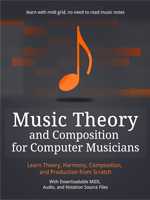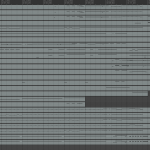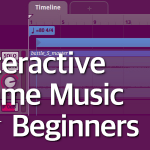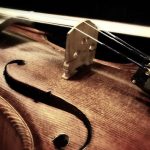In the previous part, we’ve discussed the string section, the workhorse of the orchestra. Today we will discuss woodwinds, sometimes shortened as simply “winds”. This section is often ignored by modern trailer and epic music composers, but it is very important for the sound of the orchestra. Let’s get on with it.
The Woodwinds Section
You see, the woodwinds (or winds for short) are what make the orchestra sound what it sounds like. Remove the winds, and your orchestral textures won’t be the same; you will feel there’s something missing. Winds are often used to color the sound, and to create wonderful, lush cinematic textures. When you use them this way, they’re almost inaudible – you can “feel” they’re there, but you may not tell them apart from other sounds of the full orchestra playing. This is a useful tip for balancing your orchestral template – use the woodwinds to color the sound, but don’t make them too distinct.
Of course, woodwinds can also serve well as solo instruments and they’re often used this way. Emotional melodies can be played with an oboe and a flute, so please don’t ignore this section.
- Obviously, these days a lot of woodwinds contain metal elements, or is entirely made of metal – but the traditional terms of woodwinds stick.
Often, woodwinds can also stand out, for example with flute or piccolo runs. They can be useful to create a rhythmic part of your orchestral music – for example, the low winds such as low clarinet or bassoon can be used to play rhythmic staccato notes and thus provide the rhythm. If you want to learn more about using woodwinds in orchestral music, study the older scores of John Williams, as he uses woodwinds a lot.
Woodwinds are the least homogeneous section of the orchestra. This mean the sound of each instrument is quite unique – while the instruments in the string section are build in the same way and they just get bigger, in case of the winds, instruments are build in different way. Flutes and piccolos are non-reed instruments, they play by blowing the air across the mouthpiece’s hole. A clarinet is a single-reed instrument, and oboe is a double-reed instrument. A bassoon also is a double-reed. Thus, the way the sound is made is a bit different in case of each of these three groups, so the instrument’s timbre varies.
In a score, the woodwinds are placed at the very top, and you may want to place them there in your own orchestral template. This is the order of the winds in the score and the template:
- Piccolo
- Flutes
- Oboe
- Clarinets
- Bassoon
- Contrabassoon
On the stage, the woodwinds sits behind the string section, slightly more towards the violins.
The above is also a list of basic instruments in the orchestra. The number of instruments vary, but generally, we have:
- 2 flutes (we can also have alto flute and bass flute)
- 1 piccolo
- 2 oboes
- 2 clarinets (we can also have an alto clarinet, a bass clarinet or a contrabass clarinet)
- 2 bassoons
- 1 contrabassoon
Individual Wind Instruments
Let’s take a quick look at individual instruments.
- Piccolo – the smallest instrument, the high soprano voice – consider it a very small version of a flute. Depending on the orchestra, it is played by a separate player, or by the flute player who picks it up when needed. It is a side-blown flute made of metal and has a very high pitch. It can be used to add accents, quick runs or very dynamic decorative melodies and fast passages.
- Flute – orchestral or concert flute, it can play beautiful solo melodies, and the range of the flute and its timbre is very close to human voice. Quite often it is used to double the strings, especially the violin in their upper and higher range, and other wind instruments. Once again, it is a side-blown flute. Once again, a flute requires a lot of breath in higher registers, so play your notes accordingly.
- Oboe – an oboe is a very nice instrument which has a “nasal” tone to it. It is wonderful for solo, emotional passages and when needed, it can emulate Arabic instruments and styles. It can also sound melancholic, but please note it is a very difficult instrument to play properly. But it’s quite agile and can be used for fast passages, too. Quite often, it can play in unison with a flute. It may be slow to respond, so try to avoid fast melodies build of short notes, and use legato instead.
- Clarinet – another instrument that is capable of producing wonderful, emotional and evocative melodies, mainly in its low to middle register. Clarinet rarely is used to play vibrato, so don’t worry about this particular effect. It is probably the most agile instrument of all woodwinds, and thus is can be used to play fast melodies and its dynamic range is quite large.
- Bassoon – bassoon is often used to play the bass line, but don’t be mislead, it can also produce wonderful melodies in its upper range, as it is very agile. It often doubles the lower string parts, especially the cellos, while the contrabassoon doubles the basses.
Sometimes, an orchestra can also use an English Horn, which is similar in sound to an Oboe. You can hear an example of an English Horn in “Across the Stars” by John Williams – it has a similar, nasal quality.
Woodwinds can be used for various purposes:
- They can play solo melodies, or countermelodies.
- They can provide an accompaniment for the string section.
- They can be a “solo section”, when one instrument plays a melody and other instruments provide an accompaniment, while other sections remain tiled.
- They can double other instruments.
Play around with these instruments, notice their sound quality and timbre in various registers, and study the scores to learn how to use the winds.
Articulations
Basically, we have two types of notes a woodwind can play – legato sustains and shorts. In real orchestration, we say that a wind can play slurred notes or non-sourred notes. A slurred note is connected to other notes, like in a legato mode. Non-slurred notes are played with “tonguing”, when a player uses various tongue techniques to start a note in a more dynamic and pronounced fashion.
In virtual woodwind instruments, we basically have the four articulations:
- Sustain notes – sustained notes, that can be played with or without legato. With legato, they can be considered as slurred passages.
- Shorts – various types of shorts that can emulate non-slurred notes.
- Thrill – a thrill on winds is a well known effect in orchestral music. You play two notes, one after another, very quickly.
- Vibrato – a wind instruments can play with or without vibrato – adding a vibrato to your passages adds emotional expression. This isn’t really an articulation, but an effect that can be added to sustained notes.
Beyond this, you need to explore what your woodwind libraries offer you.
Tips for Realism and MIDI Programming of Woodwinds
There are a couple of things you may want to keep in mind when programming woodwinds.
- Woodwind players need to breath. You need to program pauses for them to do so. The same rule applies to brass.
- A single woodwind instrument cannot play more than one note at the time. You need to keep this in mind when writing for each of the instrument’s groups. For example, if your orchestra contains only 2 flute players, you cannot write more than 2 parts for flutes.
- Don’t make piccolo play very long lines – the instrument requires a lot of air, and it may be physically impossible for a person to play very long notes.
- Pay attention to clarinet when playing between Bb and B in the 4th octave/register – the way these two notes are played makes the instrument create a “break” in sound that is quite difficult to hide. Try to emulate a short break in your own compositions.
- When playing vibrato, introduce it only after you hear a steady tone for a while – vibrato should not start right away.
Virtual Libraries for Woodwind Section
There are many woodwind libraries out there, and here I will point out a couple of them.
- CineWinds CORE – the core winds library by CineSamples. It contains all the basic orchestral winds and all basic articulations. It’s simple to use, low on resources nice in sound.
- Spitfire Woodwinds – Spitfire Audio has a couple of woodwind libraries, one of them is Studio Woodwinds Professional.
- Berlin Woodwinds – a huge library by Orchestral Tools.
- 8Dio Solo Winds – an older set of libraries, they can be difficult to program, but they are very expressive and can be used for solo passages. This particular libraries may not sit well with the rest of the orchestra, though.
- Symphony Series Woodwinds – a woodwind section by Native Instruments.
- EastWest Orchestral Woodwinds – an older library, which you may still find useful.
***
In the next article of this series, we will take a look at the brass section of the orchestra.
Photo source: Pixabay
Don't forget to become a fan on Facebook and subscribe to new posts via RSS or via email.









